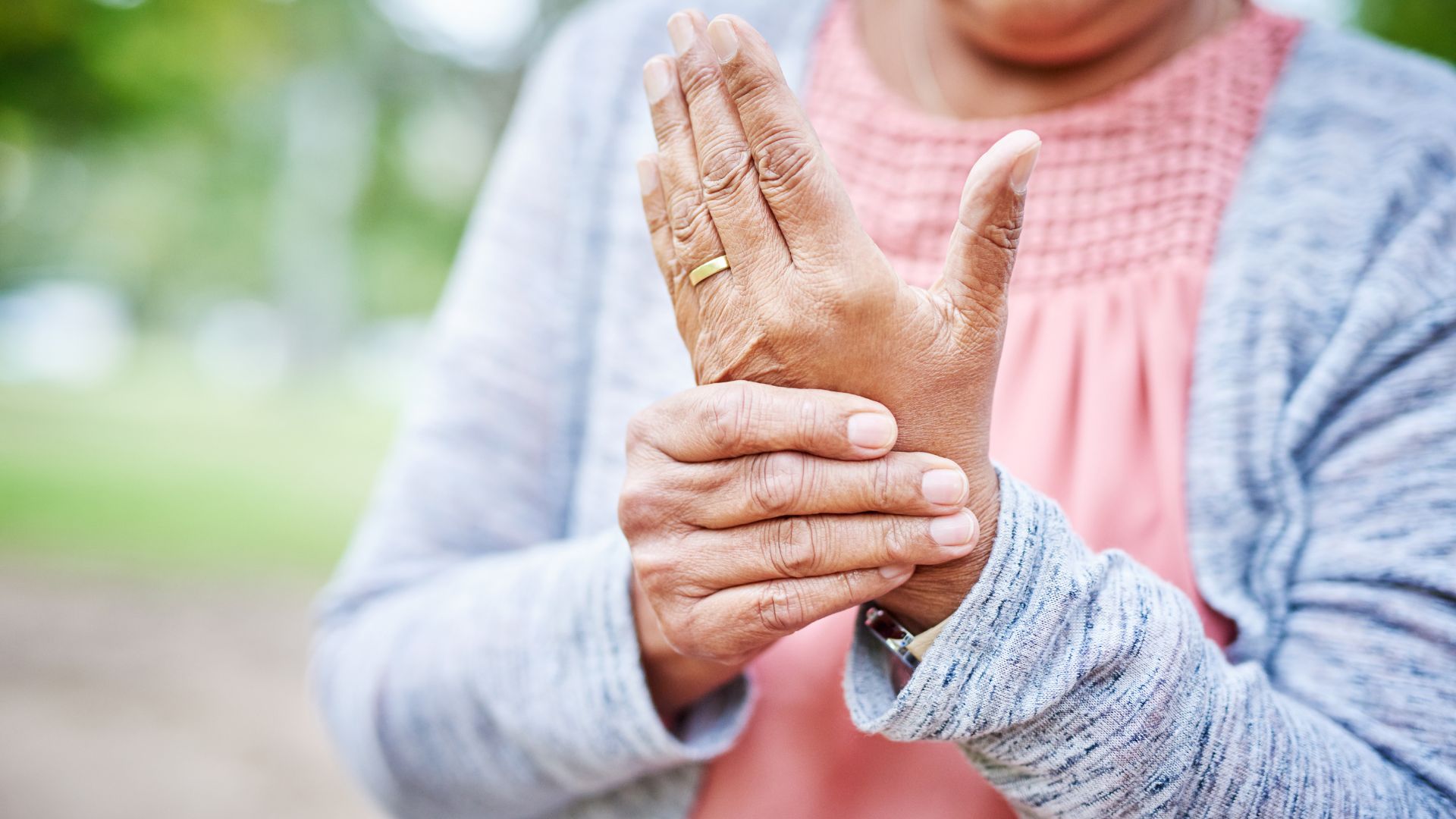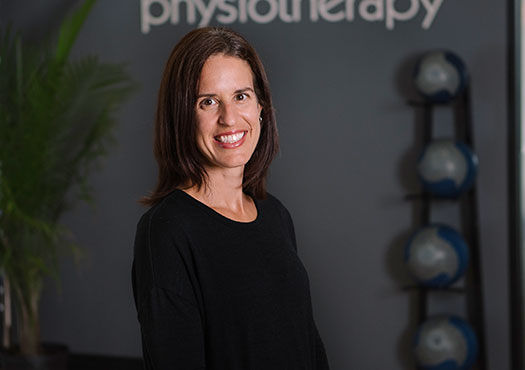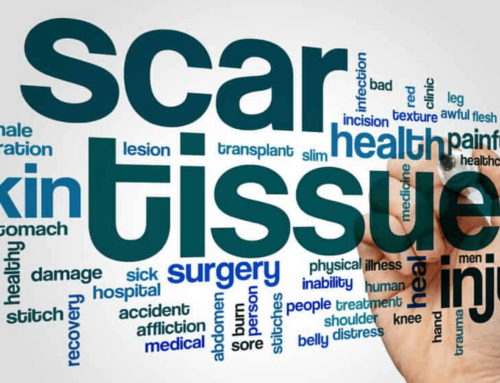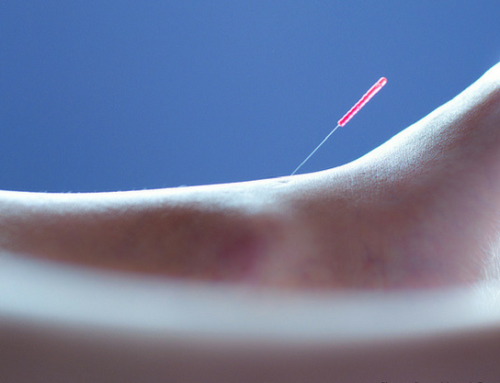Neuropathic pain treatment approach depends on the underlying cause and the individual’s symptoms and needs. At Propel Physiotherapy, we use physical therapy, including various types of manual therapy, exercise and acupuncture to relieve soreness, stiffness and discomfort that results from neuropathic pain.
In this article we will explore the symptoms and causes of neuropathic pain, as well as treatment options, including how acupuncture is used to treat this difficult and complex condition.
Table of Contents:
- What is neuropathic pain?
- Clinical symptoms of neuropathic pain
- Causes of neuropathic pain
- Causes of central neuropathic pain
- Causes of peripheral neuropathic pain
- Neuropathic pain treatment
- Acupuncture for neuropathic pain
- Deafferentation Protocol for Neuropathic Pain
What is Neuropathic Pain?
Neuropathic pain is a type of pain caused by damage or disease to any part of the nervous system. This type of pain is often characterized by a sharp, burning, stabbing or shooting sensation that is constant or intermittent.
Conditions causing neuropathic pain are often broken down into either pain caused by damage to the central nervous system or pain caused by damage to the peripheral nervous system. A systematic review on studies of neuropathic pain found the prevalence of neuropathic pain ranges from 6.9 percent to 10 percent of the population.[i]
This condition can be disabling, leading to a loss of function and independence.
Clinical Symptoms of Neuropathic Pain
- Allodynia: Allodynia refers to the experience of pain from stimuli that don’t typically cause pain. For example, a light touch or a gentle breeze may be perceived as painful.
- Hyperalgesia: Hyperalgesia involves an increased sensitivity to painful stimuli. In individuals with peripheral neuropathic pain, even mild pressure or minor injuries can trigger an exaggerated and prolonged pain response.
- Burning Pain: Many people with peripheral neuropathy describe their pain as a burning sensation. This type of pain is often persistent and may be accompanied by tingling or numbness.
- Sharp or Stabbing Pain: Some individuals experience sharp, stabbing, or shooting pains in the affected areas. This type of pain can be sudden and intense.
- Tingling and Pins-and-Needles Sensation: Tingling or a “pins-and-needles” sensation is common in peripheral neuropathy. It may be constant or intermittent.
- Numbness: Numbness refers to a reduced or loss of sensation in the affected areas. It can contribute to a feeling of weakness or lack of coordination.
- Electric Shock-like Pain: Some individuals with peripheral neuropathy describe their pain as electric shock-like sensations. These sensations can be brief but intense.
- Freezing Pain: Freezing pain is characterized by a sensation of extreme cold in the affected areas, even when the actual temperature is normal.
- Throbbing or Pulsating Pain: Throbbing or pulsating pain can be a component of peripheral neuropathic pain, and it may be accompanied by other sensations like tingling or burning.
- Muscle Weakness and Loss of Reflexes: Individuals with central pain may have accompanying weakness due to the effects on the central nervous system
Causes of Neuropathic Pain
Neuropathic pain can be divided into two general categories. Those caused by a peripheral nervous system consisting of the peripheral nerves, ganglia and nerve endings and the central nervous system consisting of the brain and spinal cord. Neuropathic pain can also be classified as a combination of central and peripheral pain.
Causes of Central Neuropathic Pain
- Central Post-Stroke Pain: Damage to the sensory pathways of the brain as well as the area where the brain processes pain can lead to neuropathic pain
- Spinal Cord Injury: Damage to the spinal cord disrupts transmission of signals between the brain and the rest of the body
- Multiple Sclerosis: In MS the immune system attacks the protective covering of nerve fibers in the central nervous system causing pain
- Traumatic Brain Injury: An injury to the brain can change the normal processing of pain signals
- Tumours: Tumours in the brain or spinal cord can compress or infiltrate the nervous system leading to pain
- Syringomyelia: A cyst or cavity developing in the spinal cord that can compress and damage surrounding nerve tissue
Causes of Peripheral Neuropathic Pain
- Diabetes Mellitus: Diabetic neuropathy is a common complication of diabetes. Prolonged high blood sugar levels can damage nerves, leading to peripheral neuropathic pain.
- Trauma or Injury: Physical injuries, such as those sustained in accidents, falls, or sports injuries, can damage peripheral nerves and cause neuropathic pain.
- Infections: herpes zoster (shingles), HIV, Lyme disease, and hepatitis C, can lead to peripheral neuropathy and associated pain.
- Autoimmune Diseases: Autoimmune conditions like rheumatoid arthritis, lupus, and Guillain-Barré syndrome can result in inflammation that affects peripheral nerves and causes neuropathic pain.
- Medications: Some medications, especially those used in cancer treatment (chemotherapy drugs), antiretroviral therapy, and certain antibiotics, may have peripheral neuropathic pain as a side effect.
- Genetic Factors: Inherited genetic disorders, such as Charcot-Marie-Tooth disease, can lead to peripheral neuropathy and associated pain.
- Cancers: Some cancers, especially those that affect the nervous system or compress peripheral nerves, can lead to neuropathic pain.
- Thyroid Disorders: disorders affecting the thyroid gland, such as hypothyroidism, can contribute to peripheral neuropathy.
- Phantom Limb Pain: the perception of pain or discomfort after an amputation
Neuropathic Pain Treatment
Physiotherapy plays a key role in the complex management of neuropathic pain. Addressing pain, as well as the secondary effects of stiffness, inflammation and loss of function are all aspects of the physiotherapy approach to neuropathic pain treatment for various conditions.
Physiotherapy consists of:
- Modalities – TENS, laser therapy, contrast baths can be used to manage pain and swelling
- Therapeutic Exercise – A systematic review found exercise to be an effective and feasible approach to treating neuropathic pain for a variety of conditions including spinal cord injury, stroke and multiple sclerosis.[ii]
- Sensory Techniques – Desensitization techniques are used to modify and normalize the body’s response to particular sensations.
- Graded motor imagery/Mirror Therapy – A process by training your brain using specific imagery techniques and tools to change pain pathways.
- Education – Providing education around self management, therapeutic outcomes, ergonomics and relaxation techniques can help with the management of neuropathic pain.
Acupuncture for Neuropathic Pain Treatment
Acupuncture is an increasingly popular modality for the treatment of all types of pain. It has been used by numerous health care providers including physiotherapists. It can be effective treatment in helping to relieve neuropathic pain.
Acupuncture involves the insertion of very thin needles into certain locations in the body which are then stimulated by the practitioner’s hands or through electrical stimulation.
Acupuncture may cause analgesic effects in the peripheral nervous system by activating receptors in deep tissue when needles are inserted at acupuncture points to excite specific types of nerve fibers.[iii] This means that acupuncture acts like pain medications by reducing inflammation or by changing the way the brain processes and perceives pain.
In the central nervous system, acupuncture may produce an analgesic effect by the “deactivation of several limbic areas that contribute to descending inhibitory modulation to enable the modulation of pain.”[iv] In this effect, acupuncture stops the pain signals to change the perception of pain by the brain.
A review of literature of the role of acupuncture on neuropathic pain has suggested that the use of acupuncture for pain relief involves various neurotransmitters and modulators including cytokines, cannabinoids, corticotrophin‐releasing factor, and adenosine.[v] All of these body chemicals aid in less pain experienced by the patient.
Deafferentation Protocol for Neuropathic Pain
In the early 1990s physician and chronic pain specialist Dr. Linda Rapson along with her colleagues at the Lyndhurst Centre (rehab facility for spinal cord injuries) developed an acupuncture protocol specifically for people with spinal cord injuries suffering neuropathic pain.
The deafferentation protocol involves electroacupuncture treatment for central pain at or below the level of the spinal cord lesion. These specific points are inserted at a specific angle and depth in the head and stimulated for 30 minutes.
Research has found this protocol to be effective in the treatment of central pain in this population.[vi] Clinically, these protocols have been used to treat other forms of central neuropathic pain conditions including traumatic brain injury and multiple sclerosis.
At Propel Physiotherapy our therapists have experience treating many types of pain including neuropathic pain. Using a wholistic approach, including acupuncture, our staff has the knowledge and expertise to help relieve your pain and improve your function. Contact us today to see how we can help.
References
[i] VanDenKerkhof EG, Mann EG, Torrance N, Smith BH, Johnson A, Gilron I. An Epidemiological Study of Neuropathic Pain Symptoms in Canadian Adults. Pain Res Manag. 2016;2016:9815750. doi: 10.1155/2016/9815750. Epub 2016 Mar 30. PMID: 27445636; PMCID: PMC4904601.
[ii] Zhang Y-H, Hu H-Y, Xiong Y-C, Peng C, Hu L, Kong Y-Z, Wang Y-L, Guo J-B, Bi S, Li T-S, Ao L-J, Wang C-H, Bai Y-L, Fang L, Ma C, Liao L-R, Liu H, Zhu Y, Zhang Z-J, Liu C-L, Fang G-E and Wang X-Q (2021) Exercise for Neuropathic Pain: A Systematic Review and Expert Consensus. Front. Med. 8:756940. doi: 10.3389/fmed.2021.756940
[iii] Ju ZY, Wang K, Cui HS, Yao Y, Liu SM, Zhou J, Chen TY, Xia J. Acupuncture for neuropathic pain in adults. Cochrane Database of Systematic Reviews 2016, Issue 1. Art. No.: CD012057. DOI: 10.1002/14651858.CD012057. Accessed 03 January 2024.
[iv] ibid
[v] ibid
[vi] Linda M. Rapson , Nancy Wells , Jennifer Pepper , Nadine Majid & Heather Boon (2003) Acupuncture As A Promising Treatment For Below-Level Central Neuropathic Pain: A Retrospective Study, The Journal of Spinal Cord Medicine, 26:1, 21-26, DOI: 10.1080/10790268.2003.11753655
Written by














